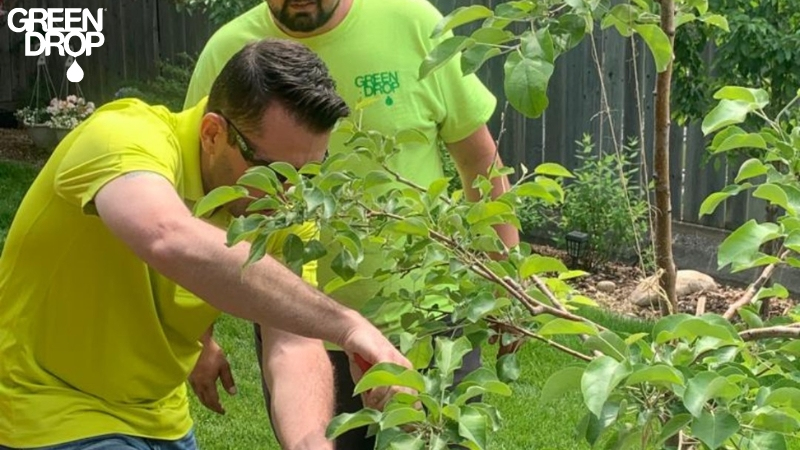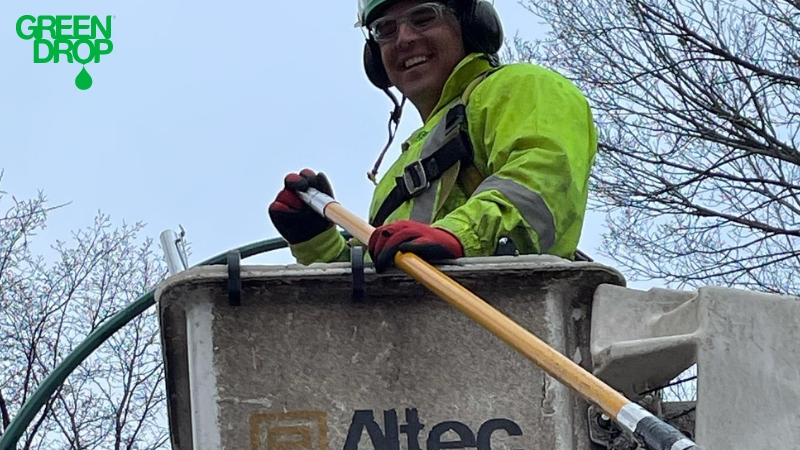What Happens If You Trim Your Trees Incorrectly? Our Red Deer Arborists Speak
Reading time: 6 minutesYour trees need regular “haircuts” to stay healthy. Proper tree trimming increases sunlight penetration and air circulation, keeps pests and diseases away, and enhances the overall aesthetics of your property.
But not just any cut will do. Knowing which branches to trim and how to safely remove them is key to preventing injury to your tree. Below, we dive into what happens if you trim your trees incorrectly and the most important things to avoid when trimming. Plus, learn the value of working with an ISA-certified arborist.

The Negative Effects of Improper Tree Trimming
Did you know? Trimming your trees the wrong way or with the wrong tools can have detrimental effects, like:
Irregular Growth
If too much of your tree's crown foliage gets exposed to the sun, this can cause irregular branch growth or burned tree bark. When this happens, your tree may start growing thin, spindly branches in an attempt to protect its hardwood. These are called water sprouts and are less attractive than full, foliage-heavy branches.
This growth is unhealthy and not only ruins the beautiful look of your tree but also weakens its overall structure. Over time, your tree can become more susceptible to high winds, and the branches may break more easily.
Pest Infestation
Pests are naturally attracted to rotting, diseased wood and dark and moist areas. Overgrown and poorly maintained trees provide creepy crawlies with the perfect environment in which to eat, live, and lay eggs. A healthy, trimmed tree allows plenty of sunlight and air through the branches instead, which reduces moisture spots and makes the space less inviting for harmful bugs trying to find food or shelter.
Plus, a poorly kept tree with branches that touch your roof or the side of your home can act as a bridge that allows carpenter ants, beetles, termites, and other unwanted pests to march straight into your house.
Bacteria and Fungal Spread
Not only does trimming prevent pests from overtaking your tree, but it also helps the foliage and bark of your tree resist the spread of damage-causing bacteria and fungal diseases. In fact, some of the most serious tree diseases known to Western Canada are caused by fungal infections, like:
When you keep your trees tidy, it’s easier for them to fight off harmful pathogens like the above, thus making it harder for health problems to get a foothold.
Tree Shock
Trimming too many branches at once can put a tree into a condition called shock. Over-trimming ultimately removes critical portions of the tree's foliage, which will hinder its ability to produce enough chlorophyll or protect itself from harmful UV rays. Signs of shock in trees include slower growth, less foliage, and more interior sprouting.
We recommend that you cut no more than 20% or ¼ of your tree’s living branches per year. Otherwise, your tree could have difficulty returning to normal health and could be at risk of decline.

Harmful Tree Trimming Practices You Should Avoid
Now that you know how damaging improper cutting can be, here are some of the most harmful practices to avoid:
Trimming At the Wrong Time
Like tree pruning, trimming is an event that your tree needs time to recover from. This is why it’s best to trim only when your trees are dormant.
In Red Deer, this tends to start in the late fall and ends in the early spring. If you wait for the leaves to drop, you'll know your tree is ready. You'll also be able to see which branches to cut more clearly without foliage in the way. If your tree has flowers, you'll want to trim branches either before buds begin to bloom in the spring or right after the flowers die.
Not Sanitising Your Tools Properly
Regular tree trimming services help prevent pests and disease by maintaining a healthy limb structure. Unfortunately, trimming can also contribute to the spread of pathogens if not done correctly.
Loppers, pruning shears, and other tools should be sanitized after every cut to discourage bacteria, fungal spores, and insect larvae from hitching a ride on your blade to another part of your tree. Rinsing or even washing them with soap and warm water might not be enough to kill certain tree diseases, so an approved disinfectant should be used.
Not Calling a Certified Arborist
Trimming a tree really isn’t a good DIY project unless you’re a professional yourself. Depending on the size and location of your tree, there may be multiple awkwardly-located branches that need to be cut. Our arborists have access to the most effective equipment, including commercial-grade shears and aerial lifts that allow them to remove tree material quickly and safely.
Tree Trimming Q&A
Is tree trimming the same as pruning?
Although many people confuse the terms “tree trimming” and “tree pruning” with one another, these are two different services.
Pruning removes larger branches with health issues that could compromise the rest of the tree, while trimming targets smaller branches and focuses more on shaping the tree. Depending on the needs of the tree, pruning and trimming can be done separately or at the same time.
How often should my trees be trimmed?
We recommend having your trees trimmed on a regular schedule of every three to five years unless otherwise recommended by your arborist. This ensures that your trees look great while still having plenty of time for growth in between appointments.
Can I trim a newly planted tree?
It's a common misconception that you can't prune newly planted trees at all. While trimming should always be done carefully with these little guys, the practice itself helps the tree establish a healthy structure and encourages proper trunk development.
Your arborist can let you know when it’s time to trim after planting since you don’t want to make any cuts too soon. Or better yet, they can take care of the job instead so you can just sit back, relax, and enjoy your healthy, beautiful trees.

How Our Red Deer Tree Care Experts Can Keep Your Trees Looking Its Best
Trimming a tree isn't only about aesthetics; it's a critical practice to keep your tree healthy and happy. But when not done properly, you could be making things worse for both you and your trees.
Remember that tree trimming is part art, part science, and even a little math. Working with an experienced professional will ensure that the job gets done right every time without damaging your trees or surrounding yard.
At Green Drop, our ISA-certified arborists have developed time-tested best practices that allow your trees to flourish and continue adding long-term value to your property. With our comprehensive suite of other tree health care services like tree planting, pruning, and removal, you can enjoy "one-stop shopping" for all your tree needs!
In addition to Red Deer, we also serve the cities of Calgary, Edmonton, Regina, Saskatoon, Winnipeg, and surrounding areas throughout Western Canada.

